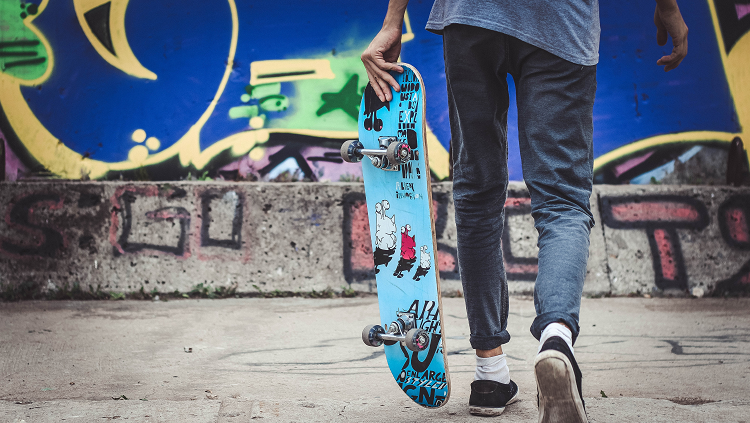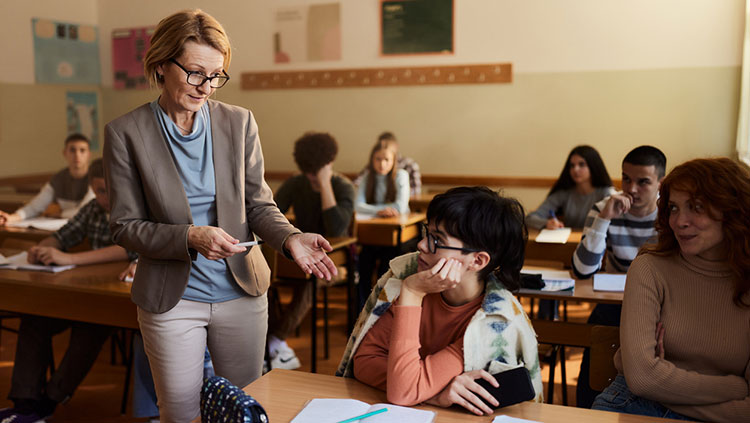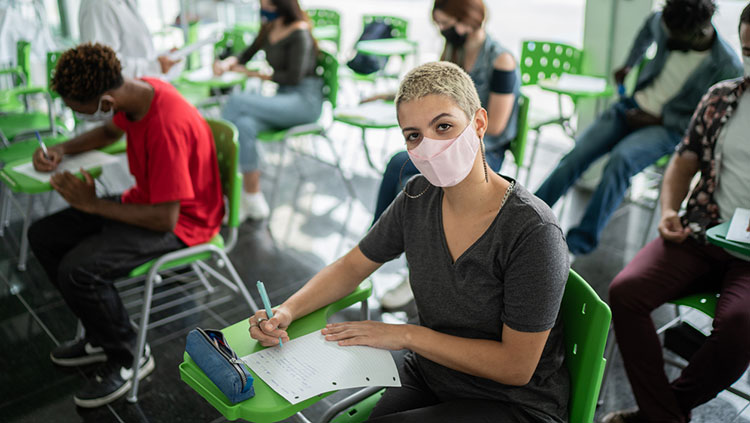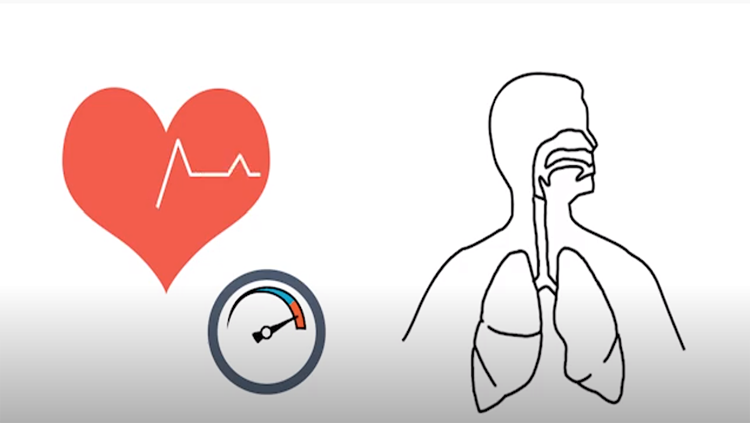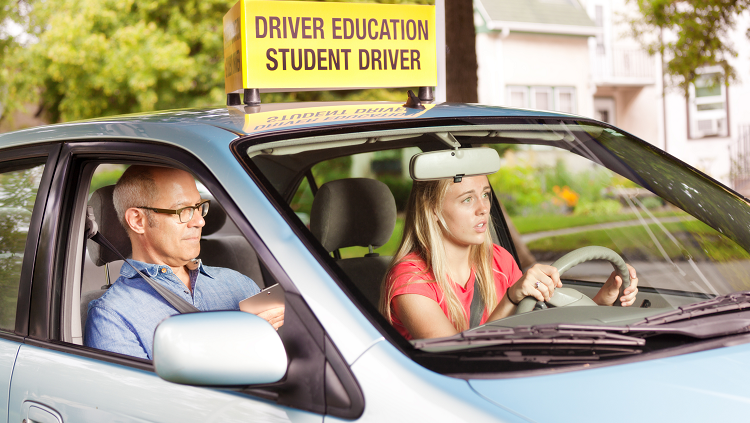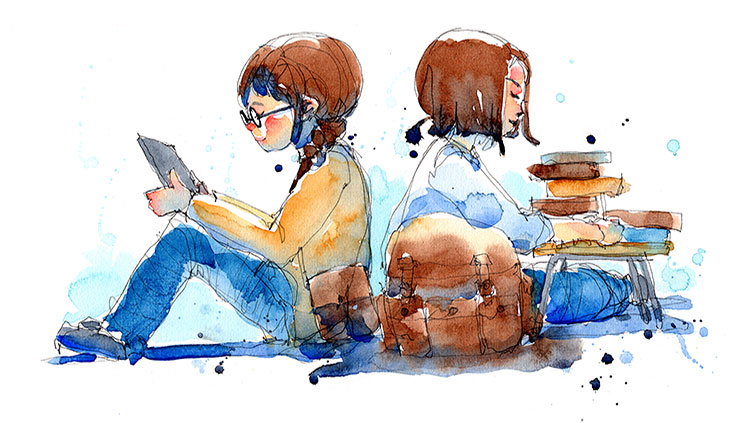Teens Take Risks. We Should Be Happy They Do.
- Published12 Aug 2025
- Author Adriana Galván
- Source BrainFacts/SfN

At this moment, we know more about the adolescent brain than at any other time in history. It seems like everywhere we turn — newspapers, movies, TV shows — we as a society are hungry for information about the magical group of people we call teenagers. It’s no surprise. Adolescence is a whirlwind of brain development, social growth, skill-building, and risk-taking. With help from brain scanning technology, we can now peek into the adolescent brain to see its development in action. We’ve learned what happens during this critical period sets the stage for a healthy transition into adulthood.
At the start of puberty, adolescents’ interests evolve. They interact with others differently. They want to spend more time with peers. This sudden and sometimes turbulent change makes some parents fret about increased risk-taking or too much time with friends. Others wonder when this period of change will end.
Human adolescence spans a long time, from roughly age 10 until the early to mid-20s, and that’s a good thing. This prolonged developmental window allows adolescents to become more psychologically mature, socially adept, and resilient, and new experiences help shape their development.
Many things set adolescents apart from children and adults. Among their most important — but often undervalued — attributes is the increased proclivity to be more daring. Not fearless, but daring. This is what makes adolescents so impressively willing to try new adventures, meet new people, adopt new technologies, and stand up for causes they believe in. This increased risk-taking is no accident. In fact, normal brain changes encourage this behavior because it is critical to ensure healthy development.
The brain achieves three key feats during its heightened risk-taking period. First, it strengthens the power of the prefrontal cortex, a brain region we all need to make good decisions, take in the perspectives of others, and think about the future. Taking risks enhances activation in the prefrontal cortex, giving it an opportunity to “practice” exerting emerging skills such as impulse control, future planning, and emotion regulation.
Taking risks enhances activation in the prefrontal cortex, giving it an opportunity to “practice” exerting emerging skills such as impulse control, future planning, and emotion regulation.
Second, the brain undergoes extensive synaptic pruning, the process of refining neural pathways. By removing unnecessary connections, it allows important ones to strengthen, creating an incredibly efficient “power grid” that lets different brain regions communicate. A particularly important connection is the one linking the amygdala, which helps govern emotions, to the hippocampus, which helps form memories. Together, these structures develop our emotional memories — memories infused with how those experiences made us feel. Strengthening this neural pathway allows adolescents to get a clearer picture of who they are, and they develop an identity giving them direction and purpose. It’s also why something like returning to a particular location at the mall can conjure up feelings of warmth if that’s where we spent fun times with friends. The refinement of this critical grid doesn’t happen overnight — it takes time, experience, and learning.
The third major milestone concerns the massive learning that happens during adolescence. There is a flurry of activity in the brain regions encouraging motivation, responding to rewards, and storing new discoveries. These learning centers are the first responders in the face of new ideas, adventures, and yes, mistakes. Adolescents are actually better at learning from their mistakes than adults are — as research in my lab has discovered — because of this robust engagement of the brain’s learning systems.
Similarly, the adolescent brain responds more strongly to rewards compared to adults, which is why adolescents take more risks. Risk-taking hinges on the notion that the unknown is thrilling and potentially rewarding. This increased excitement for a possible reward motivates teens to roll the dice and see where life takes them: perhaps to audition for the school play, join a new friend group, attend college in a place far from home, or advocate for principles aligned with their identity. These are risk-taking behaviors we should celebrate. And when teens do make mistakes, which they certainly will, we can view these behaviors as healthy and approach them with both understanding and support.
Together, the three milestones the brain achieves during adolescence are essential for what comes next: adulthood. The social connections they make, the learning they do, and the risks they learn from help adolescents prepare for the next phase of life by boosting confidence, autonomy, and a sense of identity.
However, brain development alone won’t ensure a successful transition into adulthood. Adolescents need support from adults and society to help them navigate a changing social landscape and acquire new psychological tools. Formative experiences, such as those that inspire problem-solving and a belief in oneself, are deeply important for establishing a strong sense of well-being. Caring social and family systems — those that balance giving them autonomy with a safe place to seek guidance — play a key role in supporting adolescents both in good times and in times of distress, disappointment, or adversity.
CONTENT PROVIDED BY
BrainFacts/SfN
What to Read Next
Also In Childhood & Adolescence
Trending
Popular articles on BrainFacts.org



